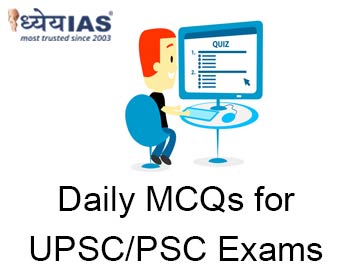Home > Daily-mcqs
Daily-mcqs 22 Aug 2024

Q1:
Instead of using the Earth's Coordinated Universal Time (UTC), why is it necessary to establish a separate timekeeping standard for the Moon?
A: Time on the Moon runs the same way as on Earth, but a different standard is needed for communication purposes.
B: Time runs slightly faster on the Moon due to the gravitational difference between the Earth and the Moon, which affects critical lunar operations.
C: Earth's UTC is too complex to be adapted for lunar missions.
D: The Moon's rotation is faster than that of the Earth, so a different time standard is needed to synchronize activities.
Answer: B
Explanation:
According to Einstein's theory of general relativity, time runs differently in different gravitational fields. On the Moon, time runs slightly faster than on Earth, leading to a time discrepancy of about 58.7 microseconds per day with Earth. This discrepancy can affect critical operations such as spacecraft docking, data transfer and navigation. Which makes it necessary to establish a lunar time standard different from Earth's UTC.
Q2:
Which of the following is correct about the Supreme Court's stance on sub-classifications within Scheduled Castes (SCs) established in recent judgments?
A: States are prohibited from making sub-classifications within SC lists as they must be treated as a homogenous group.
B: States can make sub-classifications within SCs to better target benefits to the most disadvantaged groups, provided it is based on empirical data.
C: Sub-classifications within SCs can be done arbitrarily by states without the need for any empirical evidence.
D: Sub-classifications are permitted, but only for the purpose of reducing the overall reservation quota for SCs.
Answer: B
Explanation:
The Supreme Court has allowed states to create sub-classifications within SCs to ensure that benefits reach the most disadvantaged groups within the community. However, such sub-classifications must be based on empirical evidence and historical data that show systemic discrimination, and not on arbitrary reasons.
Q3:
What was the significance of the 2004 Supreme Court judgment regarding sub-classification of Scheduled Castes (SCs) in E.V. Chinnaiah vs State of Andhra Pradesh?
A: The judgment allowed states to freely divide SCs into different categories to distribute benefits.
B: The judgment held that SCs constitute a homogenous group, and states cannot divide them into different categories for the purposes of reservation.
C: The judgment allowed the implementation of the creamy layer principle within SCs to exclude affluent individuals.
D: The judgment supported the idea of complete autonomy of states on the SC reservation system without judicial oversight.
Answer: B
Explanation:
In the 2004 judgment of E.V. Chinnaiya vs State of Andhra Pradesh, the Supreme Court ruled that Scheduled Castes must be treated as a homogenous group and cannot be divided into different categories for the purpose of distributing reservation benefits. The judgment emphasized the unity of Scheduled Castes as a single category under the Constitution.
Q4:
What is the primary objective of the “Create in India” campaign under the National AVGC-XR Mission?
A: To restrict foreign direct investment in the AVGC sector to protect domestic companies.
B: Promote indigenous content development and attract foreign direct investment by promoting international partnerships and skill development.
C: Reducing the number of AVGC professionals in India to maintain a controlled market size.
D: Encouraging Indian AVGC companies to outsource their work to international markets.
Answer: B
Explanation:
The "Create in India" campaign aims to grow India's AVGC sector by focusing on content creation, attracting foreign direct investment, co-production treaties with international partners and promoting innovation. It also emphasizes setting up centers of excellence and leveraging the National Education Policy to promote creative thinking in schools.
Q5:
How does the National AVGC-XR Mission plan to promote inclusivity in the AVGC sector, especially for women and children?
A: By focusing exclusively on male entrepreneurs and adult content creation.
B: By providing special incentives for female entrepreneurs and promoting local children’s channels to raise awareness about India’s culture and history.
C: By excluding women and children from the AVGC sector to maintain traditional norms.
D: By mandating that all AVGC companies have equal representation of men and women on their boards.
Answer: B
Explanation:
The National AVGC-XR Mission aims to promote inclusivity in the AVGC sector by providing special incentives to encourage female entrepreneurs. Additionally, it focuses on promoting local children’s channels to educate them about India’s culture and history. The mission also emphasizes establishing a framework to protect child rights in the digital sphere.